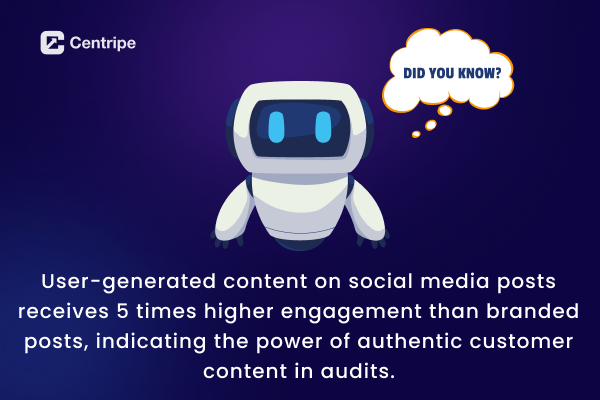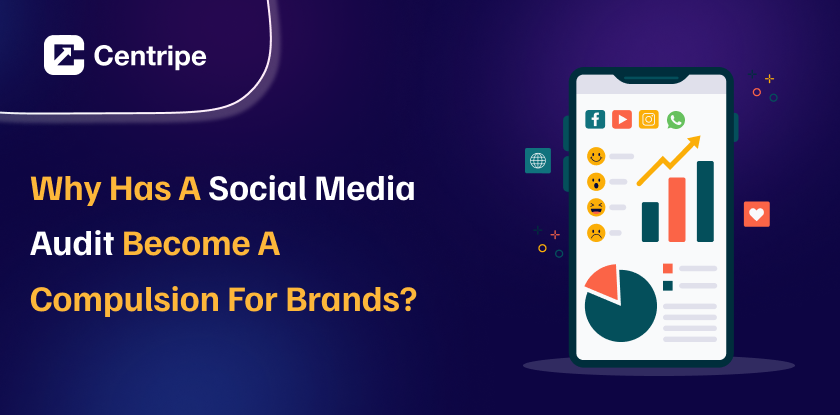I met the CEO of an XYZ company. We were discussing how social media has changed the way we used to advertise.
He said, “Creativity is the foundation for social media. But, you must always watch what your business is doing online.” Strategies work when you identify the negatives and avoid repeating them.”
Your team’s efforts are valuable when they deliver results. A social media audit is necessary because it gives you a direction to move ahead.
In 2025, average engagement rates by platform are:
- LinkedIn: 6.5%
- Facebook: 5.07%
- TikTok: 4.86%
- Threads: 4.51%
- YouTube: 4.41%
- X (Twitter): 2.31%
- Instagram: 1.16%
These numbers show different performance levels, highlighting the need for audits tailored to each platform.
What Is a Social Media Audit and Why Does Your Business Need One?
It’s a process of checking all your business social media accounts to see how well they are performing.
You review your posts, followers, engagement rates, and results. Your team gets an idea of what’s working and what needs to be improved.
THE BIG MISTAKE!
Most businesses post content without knowing if it actually helps their business grow. Happened to me too in the early days.
An audit tells you which posts bring customers, which platforms waste your time, and where you are losing potential sales.
With social media audits:
You’ll know exactly which content gets results so you can create more of it. You’ll stop wasting money on platforms that don’t work for your business.
You have a clear plan to increase followers, engagement, and actual sales from social media.
Step-by-Step Guide to Your Social Media Audit

Step 1: Set Clear Goals First
Your team should be aware of what they want to achieve. Just wishing won’t bring likes and engagement. You have to set the social media goals right.
- Getting more people to visit your website
- Keeping customers longer
- Helping customers solve problems faster
- Finding new potential customers
Write down exactly what you want to achieve.
Step 2: Make a Complete List of All Accounts
Doesn’t matter how many platforms you are active on: 3, 4, ….. Create a spreadsheet and list every social media account connected to your business.
Include:
- Company pages
- Location-specific accounts
- Employee accounts
- Old accounts from past campaigns
If you have any old accounts, search for them too. This account audit is important because forgotten accounts can hurt your brand values.
Step 3: Check Brand Consistency
Look at all your profiles to make sure they match. Check these items:
- Same logo across all accounts
- Similar descriptions and messaging
- Correct contact information
- Up-to-date business hours and website links
Fix any differences you find because these are easy wins that make your brand look more professional.
Step 4: Study Your Content Performance
Move beyond simple likes and look at what really matters:
- Check if people leave positive comments or just complaints
- See how many people actually click through to your website
- Look at which types of content work best – videos, photos, or text posts
- Calculate how many people engage compared to how many see your posts
This content review helps you understand what your audience really wants.
Step 5: Know Your Real Audience
Crucial thing to do! Demographics lets you understand the audience. Not everyone who follows you is a potential customer.
Look at the age, location, and job titles of your followers. With Centripe’s AI and automation, the system will check when they are online and what content is more engaging to them.
This will help you in creating content that resonates with their mindset.

Step 6: Map How Customers Find You
Figure out how social media fits into your customer’s journey. Which platforms help people discover your business?
What content helps them decide to buy? How does social media help you keep customers happy? This performance assessment shows you where to focus your efforts.
Step 7: Study Your Competitors
Pick three to five competitors and see what they’re doing:
- How often they post
- What kind of content do they share
- How people respond to their posts
- Which platforms they use most and which ones they ignore
This helps you find opportunities they might be missing.
Step 8: Listen to What People Say

Don’t just look at your own posts. See what people say about your brand across all social media.
Check if mentions are mostly positive or negative. Find out if people talk about you without tagging your accounts. This helps you understand your real reputation online.
Step 9: Review Your Team and Tools
Be honest about how your team works:
- Check if your approval process is too slow
- See if you respond to customers quickly enough
- Look at the audit tools you use and make sure you’re getting value from them
- Identify what skills your team needs to improve
Step 10: Check Paid Social Media
When you run ads, always compare how they are performing against regular posts.
Asks the digital marketing team to test different ad styles. Check if you can track which ads actually lead to sales.
Good paid social media connects to your organic content strategy.
Step 11: Analyze Strengths and Weaknesses
Look at everything you’ve learned and organize it into four groups:
- What you’re doing really well
- What needs immediate fixing
- What easy opportunities you’re missing
- What problems could hurt your business
This helps you prioritize what to work on first.
Step 12: Create Your Action Plan
Turn your findings into specific tasks with deadlines:
- Assign each task to a real person, not just “the marketing team”
- Set up ways to measure if your improvements are working
- Plan when you’ll do your next social media audit to keep improving
A complete social media audit will surely take time, but it’s worth the effort.
You stop wasting money and resources on things that don’t work and shift your focus to a social media strategy that actually helps your business grow.
How Long Does a Typical Audit Take?
- Small business (1-2 accounts): 8-12 hours
- Mid-market (3-10 accounts): 20-30 hours
- Enterprise (10+ accounts) : 40-60 hours
Conclusion:
58% of consumers report discovering new businesses via social media, outperforming traditional search and TV for brand discovery.
Certain social media management tools like Centripe, Hootsuite, and Sprinklr are the best to implement in your business.
Social media has become a key element in creating brand awareness and increasing revenues. That’s the reason that companies spend millions to advertise their products.
